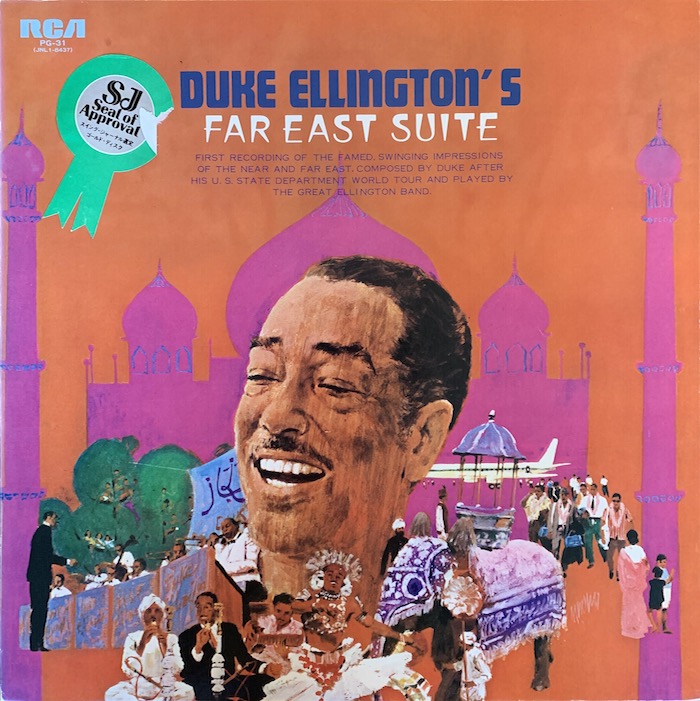
The last post looked at Duke Ellington’s album Money Jungle, a meeting of three of the greatest minds in jazz. We continue our journey with Ellington, this time looking at how he turned to the East for inspiration for his 1967 album, Far East Suite.
Far East Suite was recorded in December 1966, a couple of years after Ellington and his band had returned from a trip to the Middle East and India in 1963 and a tour of Japan in 1964. Composed by Ellington and his long-time collaborator Billy Strayhorn, Ellington sought to capture what he called ‘the exotic beauty’ of the countries they had visited.
These overseas tours, along with those by Louis Armstrong, Dizzy Gillespie and others, had been sponsored by the US State Department as part of the Jazz Ambassadors programme in a bid to improve the image of the US abroad during the Cold War. The country’s global reputation had been damaged by Russian focus on the racial inequality and discrimination in the US.
The tours were a moral dilemma for the ‘jazz ambassadors’ as they were being asked to promote the music of a country which allowed segregation and denied black citizens equal rights. Despite this, the tours went ahead and the musicians used touring as means for their own cultural exchange and the opportunity to share ‘American Music’, as Ellington preferred to call it, with the rest of the world. These tours would prove essential to the spread of jazz beyond the West, inspiring musicians overseas to explore new approaches to jazz.
However, the influence of the East on Western jazz was not a new development. Artists like Yusef Lateef had drawn inspiration from the East from as early as 1957 but Ellington’s approach was different. He didn’t just copy Eastern melodies but allowed them to inform his own style of composition. As he remarks in the album’s liner notes: ‘It’s more valuable to have absorbed while there. You let it roll around, undergo a chemical change, and then seep out on paper in the form that will suit the musicians who are going to play it.’
Ellington rejected using Eastern instruments to merely make the music sound ‘exotic’, instead producing complex arrangements, subtly inspired by the band’s experiences on tour. The first track on the album ‘Tourist Point Of View’ illustrates how Ellington tried to present a personal impression of the East and not a sweeping generalisation reducing the East to a series of musical cliches.
‘Blue Pepper (Far East of the Blues)’ is the funkiest offering on the album and as Stanley Dance remarks in the liner notes, ‘speaks of the universality of the blues’. It’s a simple track but is bursting with attitude, the musical equivalent of a chilli pepper. The mood on this track reminds me of Sun Ra’s big band compositions where horns blast, saxes screech and the band swings. Ellington would go on to echo this sound on his funky 70s offering ‘Didgeridoo’, another favourite from the vast Ellington catalogue which fuses raunchy big band blues with a monstrous breakbeat.
By the time Ellington died, he had composed over 3000 songs with a recording career spanning 50 years. Far East Suite was one of the highlights, winning the Grammy Award in 1968 for ‘Best Instrumental Jazz Performance – Large Group or Soloist with Large Group’. On this album, Ellington succeeded in tastefully capturing the spirit of his experiences out East, using them to inform and influence his compositions for a Western audience.
Finally, if this has got you in the mood, be sure to check out our ‘Facing East’ playlist for more Eastern-inspired jazz joints. Or if you’d prefer some more big band bangers, throw on our ‘Big Band Bonanza’ playlist!
If you enjoyed this post and want to stay updated, make sure to subscribe to our Spotify playlist and follow us on Instagram and Twitter!
